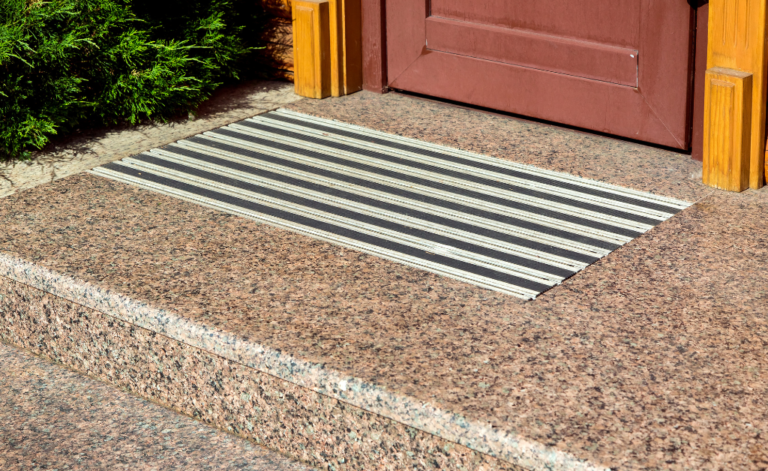
Man has been using rubber trees to create rubber products for hundreds of years.
But now that we are all trying to live greener, and we realise some of the impacts of our actions on the environment, it’s time to take a second look at some of the materials we take for granted.
Is rubber eco-friendly, biodegradable, and can it be considered a sustainable material? Or is it harmful to the environment?
Let’s find out…
What is Rubber?
Rubber is a type of polymeric material made from the juice of certain plants, mostly hevea brasiliensis (the Rubber Tree), which can also be used for making latex.
Hevea brasiliensis is an indigenous species of plants to Brazil, which supplies nearly 90 percent of the world’s naturally produced rubber.
Rubber trees produce a white, milk-like sap when its bark is cut. This milky substance (commonly known as latex) is then processed into rubber in different ways to make it an end product that can meet various needs like toy or machinery parts etc.
What Is Rubber Used For?
Rubber is a strong, elastic, flexible material that used in various commercial and industrial products like:
- rubber bands and tubing
- tires
- adhesive tape
- erasers
- soles of shoes and gloves
- weather stripping for windows
- baby bottle teats, nipples and pacifiers
- balloons
- diving equipment
- coats for insulation
- condoms
- hot water bottles
Rubber is used for making different objects that are needed in various fields like sports, medical, aerospace etc. From car tires to rubber bands, the material has many uses across multiple industries.
The elasticity of the material makes it ideal for use as shock absorbers and since it does not corrode or conduct electricity it is important to use in the making of appliances.
Is Rubber Harmful to the Environment?
The rubber industry as a whole is not good for the environment.
In the manufacturing process of rubber, only a small portion of it is used to make end products. The rest has been referred to as waste and it is estimated that for every ton produced, more than 20 tons of waste is discarded. This waste goes through processes like burning which contributes to air pollution and groundwater contamination.
The tire industry accounts for around 70% of the rubber that is produced. The production process consists of many steps like mixing, processing, curing etc. that are not environmental friendly.
Production of vulcanized rubber to make car tires also causes air pollution and water pollution which affects human health through various diseases caused by toxic emissions to air, water and land.
Natural rubber products have a much lower environmental impact, and they can be considered to be the “greenest” of all rubbers.
Vulcanized rubber products do not decompose easily in the environment since they are made from synthetic materials and substances. Vì thế, these rubber products have a major negative impact on the environment especially when they are burnt over open fires for disposal purposes or if they are dumped in landfills that do not have proper disposal facilities.
Is There Such a Thing as an Eco-Friendly Rubber?
Environmental impact of rubber varies considerably depending on which type of rubber we are talking about.
There are basically four main types of rubber that are produced nowadays:
- natural rubber
- synthetic rubber
- reclaimed rubber
- recycled rubber
Natural Rubber
Natural Rubber has been referred to as the “King of Rubbers” because it is made from the juice of certain plants and this makes it very elastic. Natural rubber is mostly used in:
- tires
- balls
- hoses
- shoe soles etc. It can also be found in: – surgical gloves
- clothing
- sustainable furniture upholstery.
Natural rubber has a high recycling rate and is mostly disposed of through depots or incineration.
Synthetic Rubber
Synthetic rubber is also called as neoprene, polybutadiene or nitrile butyl. It has a chemical structure that makes it very resistant to fluids and corrosive chemicals.
These days, synthetic rubbers can be recycled through depots but cannot be burned for disposal purposes. Most of it is thrown out in landfills or alongside the road.
Reclaimed Rubber
Reclaimed rubber contains all types of rubber that have been already used just like new rubber but it has undergone processes like sanding and grinding before they are shredded, melted and reused for different products. Reclaimed rubber is mostly found in:
- floor tiles
- thảm
- basketball courts
- playgrounds
- or even in more creative uses, such as upcycled rubber backpacks
Reclaimed rubber is made from used tires, but the tires are shredded into pieces then melted for re-processing into new products.
The tire shredding process causes some waste like dust and small particles, but recycling ensures that these substances do not get mixed with ground water or find their way to landfills.
Recycled Rubber
Recycled rubber is made from the same type of raw materials as natural rubber, but it is manufactured through different processes than those for synthetic or reclaimed rubber.
Recycling rubber is less energy intensive than manufacturing new synthetic rubber from scratch. There is no need to harvest new rubber trees, and the chemical process in rubber production is avoided.
Since most recycled rubber materials have already been used once, they absorb more water and their elasticity is lower than new products. It can be recycled again up to seven times which makes it an eco-friendly product.
What is Global Platform for Sustainable Natural Rubber?
Global Platform for Sustainable Natural Rubber is an initiative that encourages natural rubber production.
The organisation helps to ensure sustainable production of natural rubber by monitoring rubber plantations and making sure that the right trees are planted.
It also makes sure that the farming process does not cause any environmental problems like deforestation and water depletion. The GPSNR also focuses on encouraging recycling of natural rubber with the aim of maximizing energy recovery.
What’s the Difference between Natural and Synthetic Rubber?
Synthetic rubber is made of chemicals that are then mixed together to form different types of rubber. Natural rubber is plant based, and is made from the rubber tree.
Natural rubber is mainly used for making tires while synthetic rubber is used in making products like hoses, surgical gloves or flooring tiles etc.
Put simply, natural rubber is made from plant extracts while synthetic rubber is made from chemicals.
What are the Environmental Impacts of Reclaimed Rubber?
The major benefit of using reclaimed rubber is that it reduced rubber waste. This prevents dangerous substances like oils, solvents and plastics from entering the environment. These dangerous substances are usually found in raw materials that are used to make tires. When tires are made, these substances are combined with toxic chemicals like benzene and lead.
Tires must be treated before they can be recycled, so that all traces of oils, solvents or plastics are completely removed. During the manufacturing process of reclaimed rubber, tires are compressed into small pieces then heated for processing into new products.
This helps to minimize the number of cracked and unprocessed tires that are dumped into landfills. The process of creating reclaimed rubber makes it very strong and durable compared to new rubber, so manufacturers use less material when making products like floor tiles or playgrounds.
Reclaimed rubber is eco-friendly because it requires fewer resources than new rubber to manufacture products and the manufacturing process does not release any hazardous chemicals into the environment.
How do you Dispose of Rubber?
Reclaimed rubber can be disposed of through recycling and is preferable to throwing it out in landfills. For example, an American tire recycler claims that it has recycled over 200 million tires into new products like basketball courts, playgrounds and flooring tiles.
Natural rubber is biodegradable. Natural rubber decomposes in well-aerated moist soils over a period of at least one year.
Synthetic rubber cannot be used as fuel because it contains additives that might react with oxygen during burning. It can however, be burned safely to dispose of it in controlled conditions.
How long does Natural Rubber take to Decompose?
Natural rubber decomposes in well-aerated moist soils over a period of at least one year.
Decomposition is accelerated by the presence of microorganisms which oxidise the rubber.
Is Rubber Better for the Environment than Plastic?
Although rubber and plastic are both used to make products, they have different impacts on the environment. Both materials can be harmful to the environment, depending on how they are made, used and disposed of.
It is well known that plastic is terrible for the environment. Plastic waste is a huge issue. Many types of plastic are not commonly recycled and end up in landfill, or rivers and oceans.
Vì thế, in general it is considered that rubber is a more environmentally friendly material than plastic.
The Final Word
So, is rubber biodegradable?
The answer is – it depends what type of rubber you’re talking about.
Synthetic rubber does not decompose in the natural environment since it is made using synthetic substances that are resistant to water, sunlight and air. It takes around 300 years for rubber to decompose completely in an organic matter like soil or compost, but this process can be accelerated by using certain chemicals and bacteria.
Natural latex rubber is biodegradable and uses less chemicals. However, currently we do not use enough natural rubber and rely too heavily on synthetic rubber instead.
As we can see, most rubber is harmful to the environment despite its usefulness. The best way to protect the environment from the negative effects of rubber is to recycle all kinds of rubber as much as possible and not burn it over open fires. This will help stop deforestation and lower air pollution levels in general since rubber is usually associated with industries that are more likely to contribute to air pollution.
Moreover, rubber manufacturing processes need to be improved and engines running on gas should be used as much as possible since both these factors can help speed up recycling and stop deforestation and overgrazing.
Finally, if we all use less rubber, there will be less need to produce it and we will not be putting as much strain on the environment.
 English
English Tiếng Việt
Tiếng Việt




